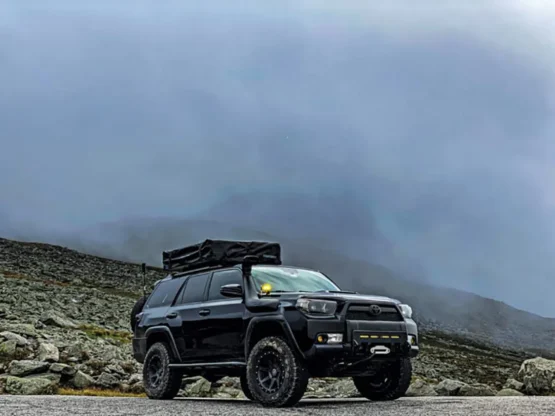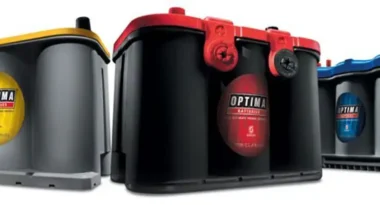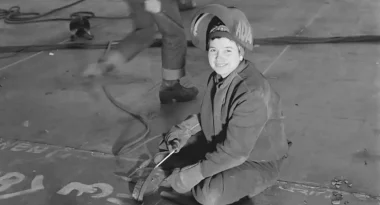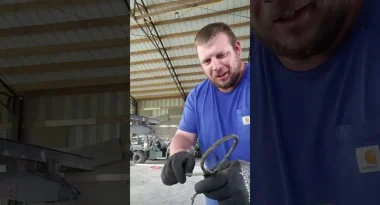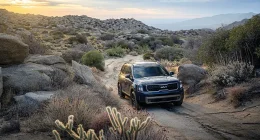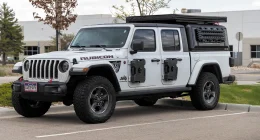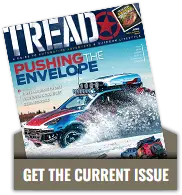Eibach Load-Leveling System
Adaptable Suspension
While some would argue adding a lift and bigger tires are the way to get a build started, it all depends on what you’re looking to get out of your rig. If you’re going for a true rock crawler, an overlander, or just looking to add flare, where you start can vary significantly. Over the course of a build, it’s not uncommon to go back a step or two or change something out for a second time. You can have the best plan in the world for your build, but when a really great product hits the market, you might have to deviate from that plan a bit. Or, your build plan changes and you’re wanting more out of your vehicle. It goes without saying, all of this can be costly and return policies on used equipment are virtually nonexistent.
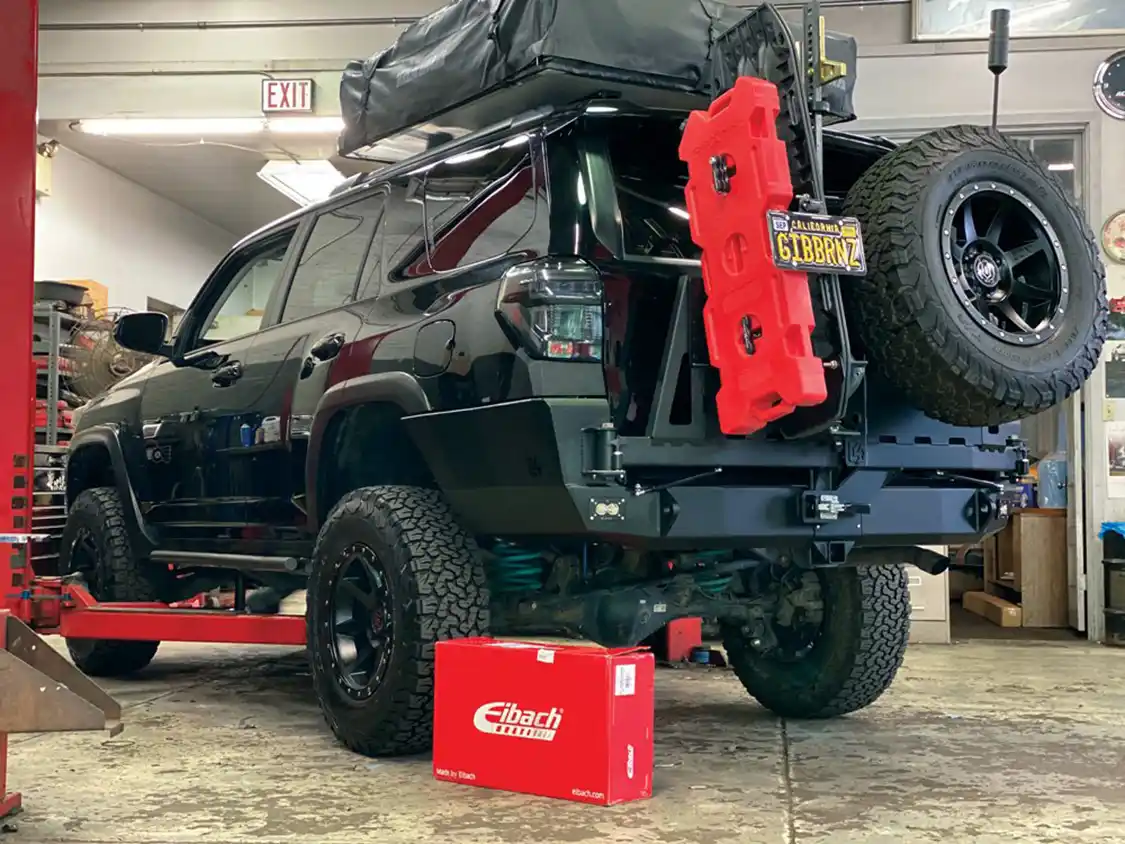
On our fifth-generation 4Runner, we’re now at that stage in the build where we need to go back to the drawing board with the suspension. Initially, we went with Dobinsons comfort-rated springs in the front and a 250-pound load rating with the rear springs. What was once planned to just be a camping/fire road vehicle morphed into an overland build. Significant weight was added to both the front and rear with steel bumpers, a winch, rock sliders, a steel drawer system, recovery accessories, and, on occasion, a roof top tent.
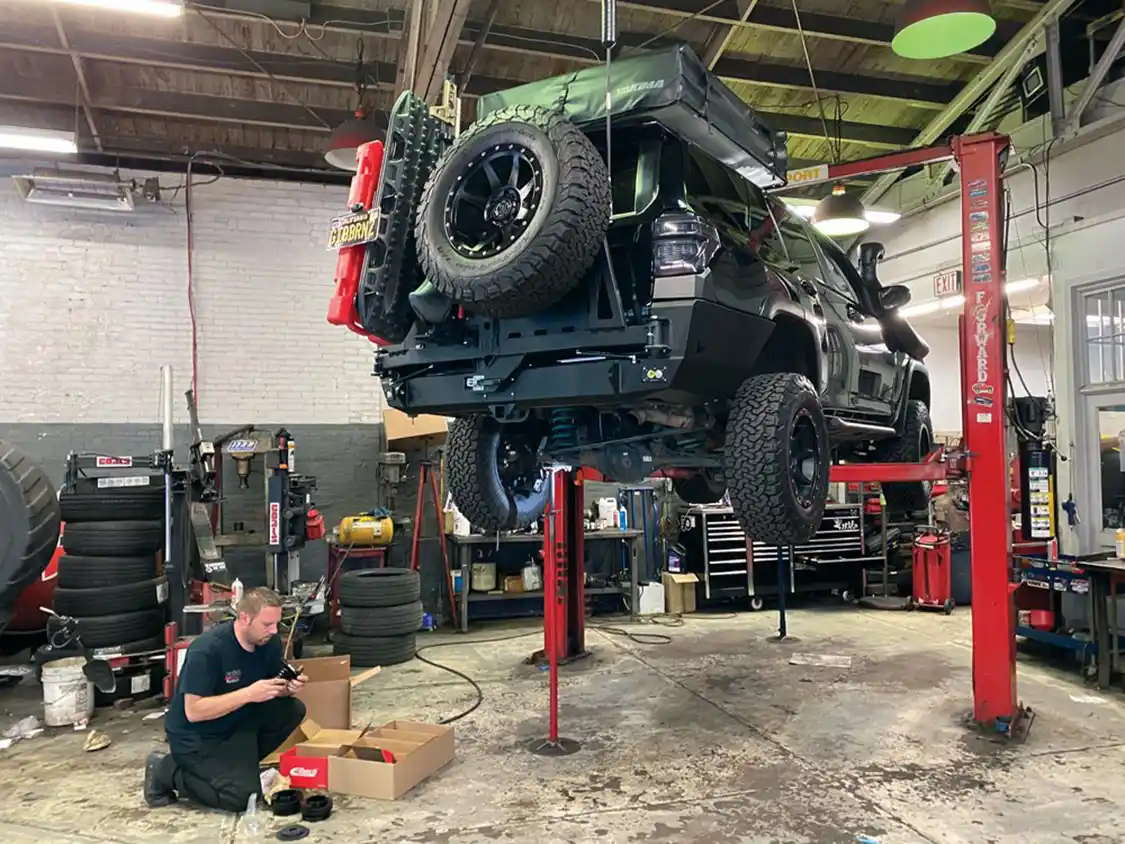
So, our current suspension setup just wasn’t cutting it anymore and the ride was becoming less comfortable by the day. In search of a new rear setup (since that’s where a bulk of the weight was added), we stumbled upon Eibach’s new Load-Leveling System. Designed for Toyotas with a solid-axle coil spring suspension, the Load-Leveling System offers three different load ratings, with varying heights depending on the weight:
0 to 200 pounds
(2.0- to 1.5-inch)
200 to 400 pounds
(2.5- to 2.0-inch)
400 to 500 pounds
(2.5- to 2.25-inch)
The interesting thing about this particular kit is that Eibach leverages their standard 3.57-inch ID Off-Road Race Springs and an adjustable perch; this allows the height to be raised or lowered depending on the weight and your desired height. So as your build changes over time, the suspension can truly grow with your build without it taking a toll on your wallet or having to change the build plan. Even more important to us was how adaptable the kit itself is. Changing out the springs can be a straight-forward DIY task with a set of spring compressors. Each kit comes with your desired load-capacity springs, two progressive polyurethane bumpstops, billet aluminum threaded spring seats, polyurethane spring seat isolators, all the necessary hardware, and two 6mm height adjustment tools.
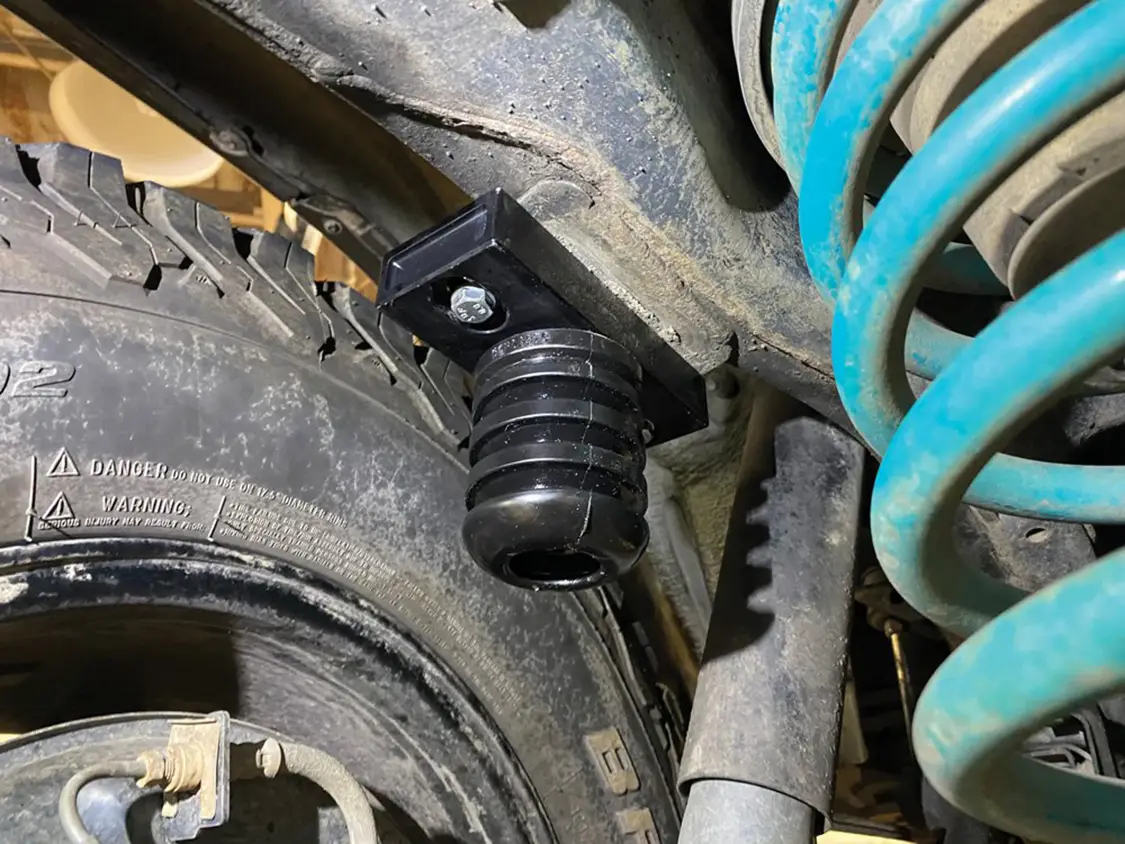
To start, we picked up the 250-lb/in Load-Leveling System and another set of 300-lb/in springs. The springs themselves are reasonably priced, easy to swap out, and fairly easy to resell (since they’re common springs). Because our 4Runner can have varying weight swings depending on the setup we’re running, we figured we’d test both out to get our sagging rearend back to the desired 2.5-inch lift and comfort level.
Installation of the Load-Leveling System is fairly straight forward and can be done in a few hours with common automotive tools, a floor jack, jackstands, a screw or pole jack, and a little elbow grease. We opted to use spring compressors versus temporarily uninstalling the rear shocks, which we’ll explain more.
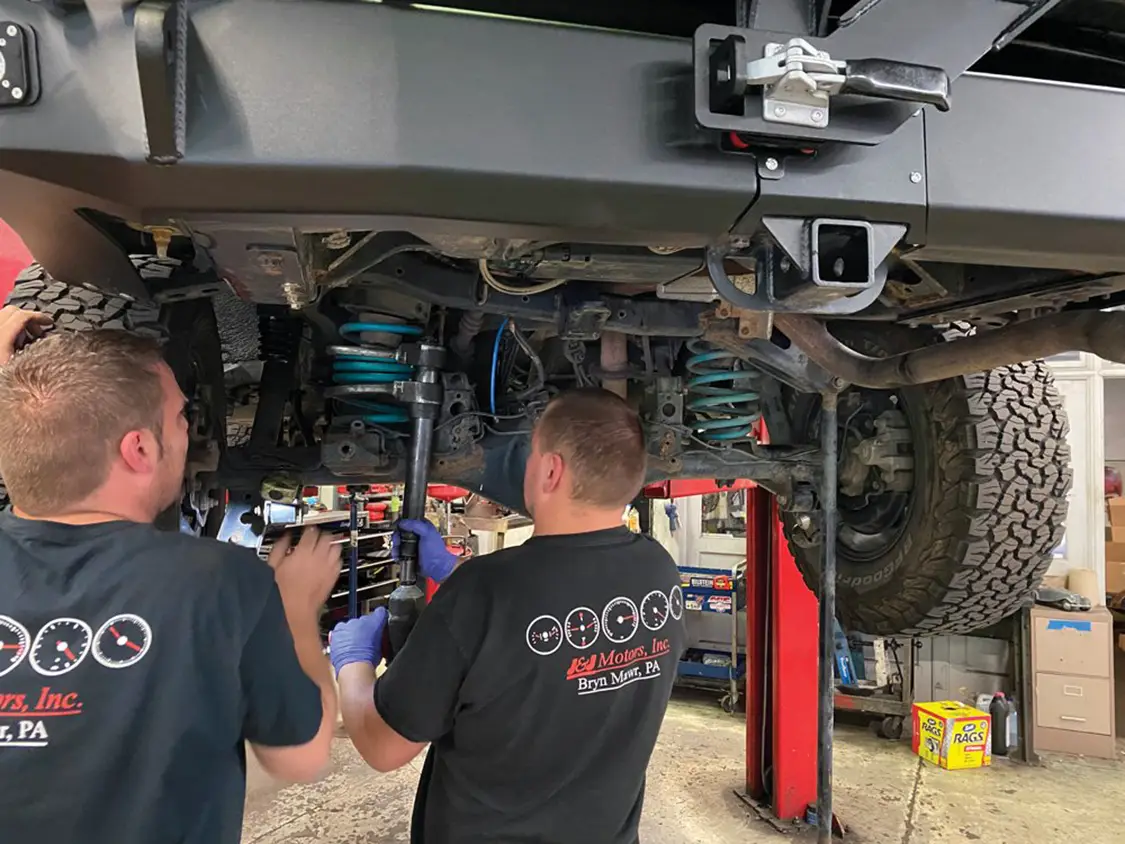
Simply start by raising the vehicle. Be sure it’s supported with the appropriate safety equipment. Since we wanted to capture the installation process and get the best photos possible, we took our 4Runner to a friend’s shop to get it up on a proper lift.
Next, swap out the OEM bumpstops for the new progressive polyurethane stops using the M10-1.5x30mm hex screws, the M8-1.25x35mm hex screws, and M8 flat washers. You’ll notice Eibach’s new bumpstops are “outboarded,” making them far superior to the OEM stops. This will allow you to get more bump travel back.
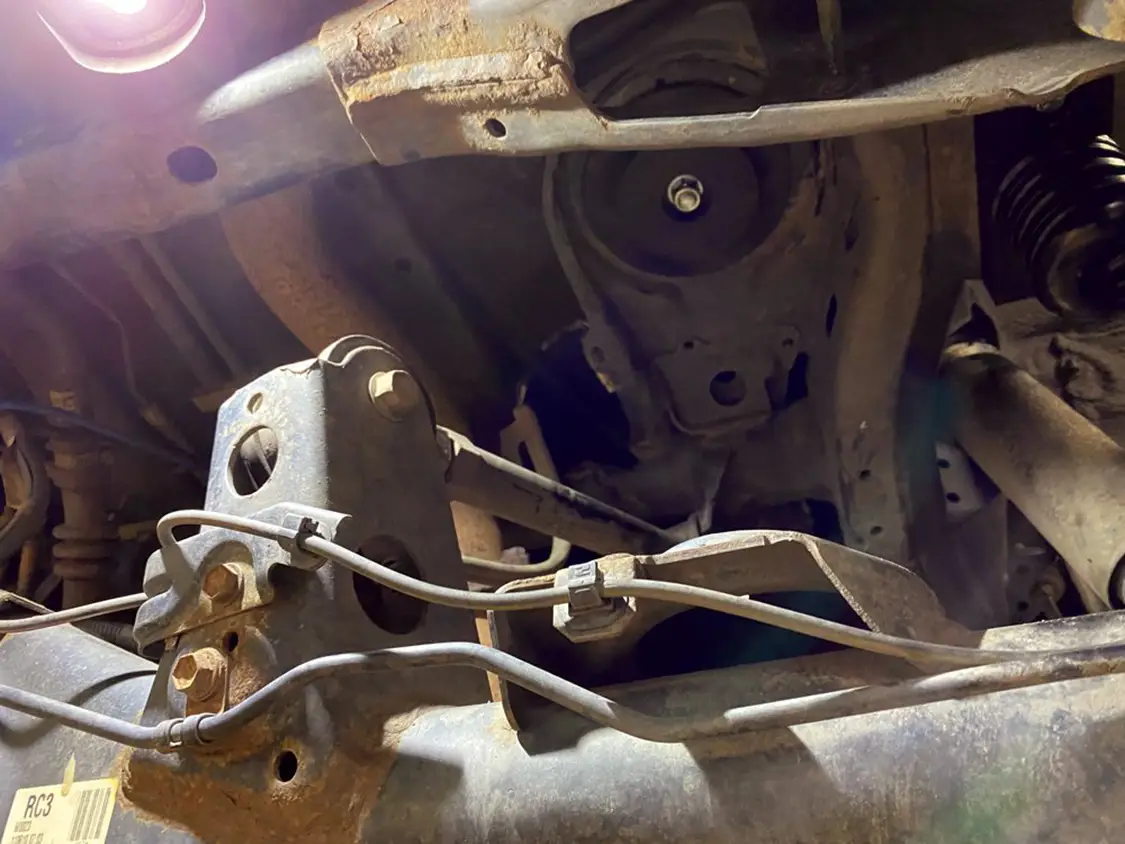
Once the new bumpstops are installed, you can then start removing the existing springs from the rear. Since we weren’t ready to completely swap out the entire suspension (and since our rear shock bushings are a bit seized up at the moment), we decided to use spring compressors to remove the Dobinsons springs. If you don’t have spring compressors or can uninstall the bottom of the rear shocks from the axle, you’ll just need to disconnect the endlinks from the antiroll bar and a screw or pole jack to support the opposite side of the axle before doing so. This may make removing your existing springs easier than using spring compressors.
As you remove the springs, the upper isolators should be removed as well. It’s important to note that with the Eibach Load-Leveling System, the new isolators completely replace the OEM pair and will not be used moving forward with this kit.
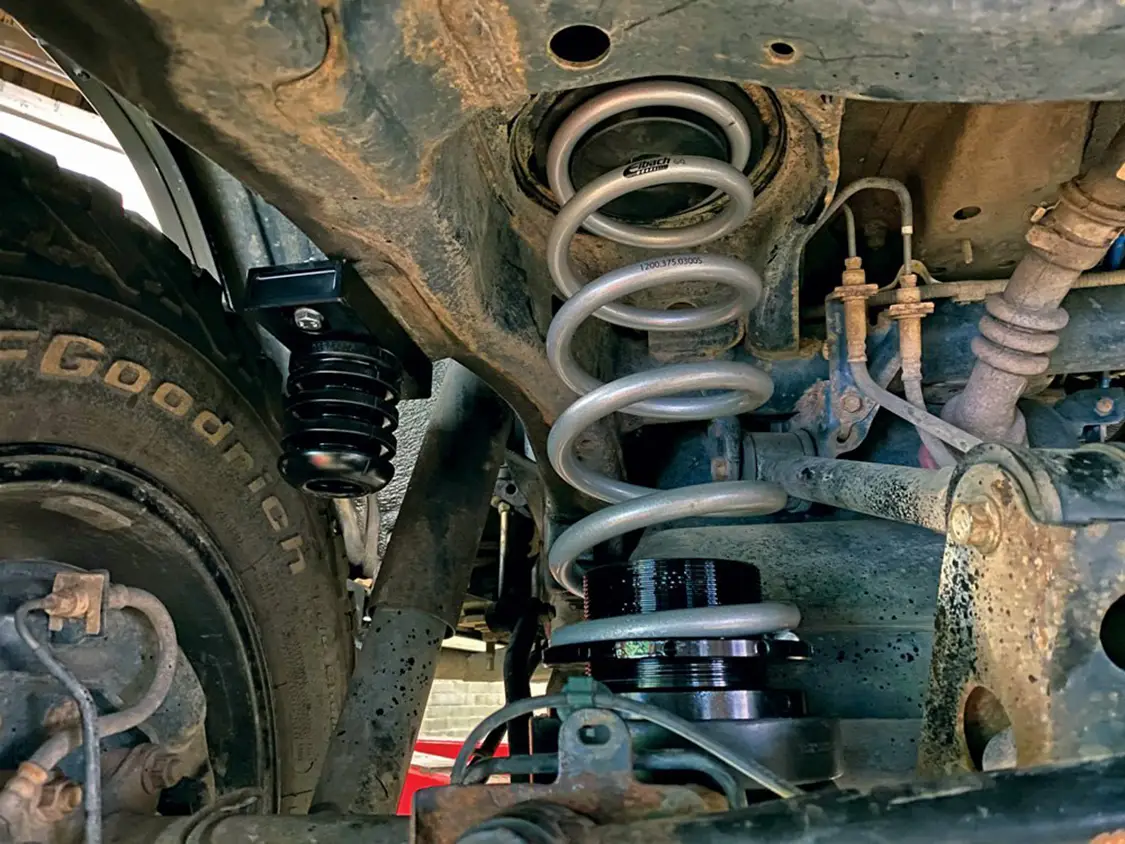
Once the rear springs were removed, we then installed the spring perch adapter using the included M12-1.75x30mm hex screw and M12 washer/nut.
Next, we set the urethane adapter to the spring mount, lining it up with the helical rise on the adapter, sat the spring on top, and installed the assembly onto the axle sitting the top of the spring into the adapter. If spacing is an issue during this step you could compress the spring down a bit with the compressors then remove the compressor with everything in place, ensuring the bottom sits properly on the axle and the top slides into the spring adapter.
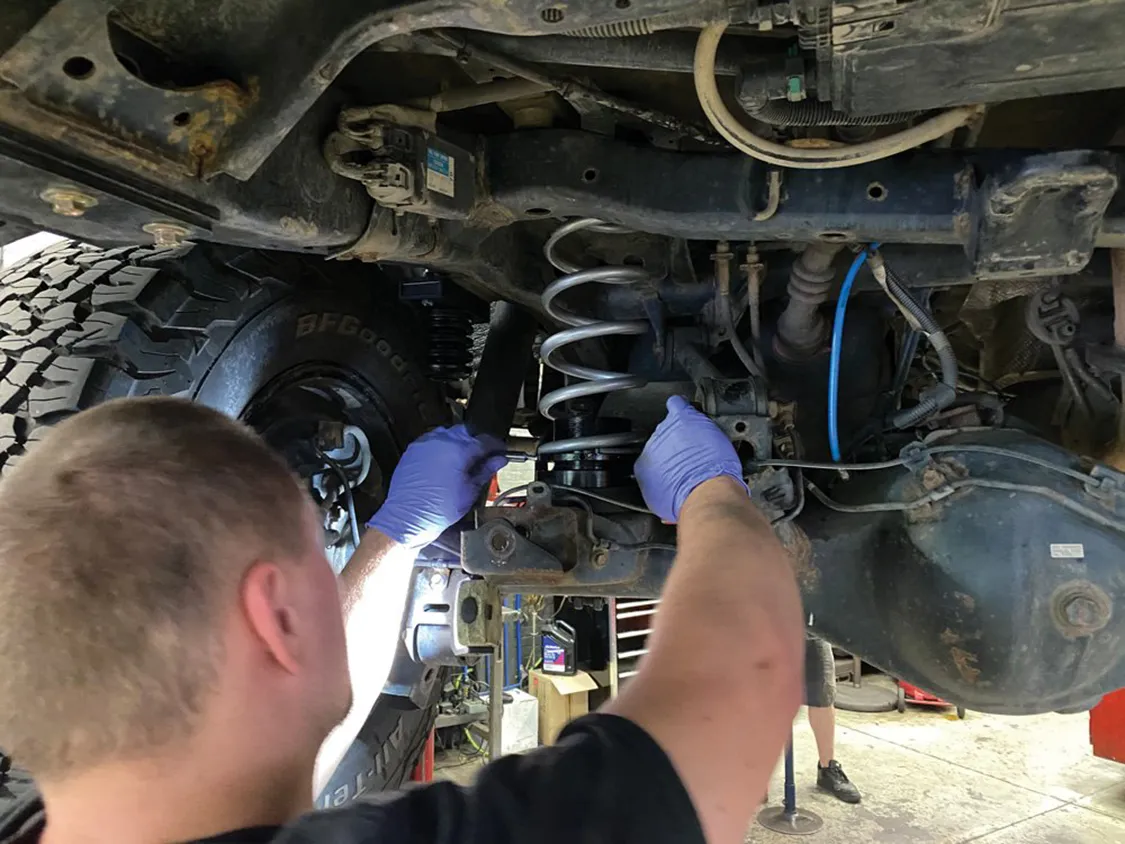
Once we repeated the process on the passenger side of our 4Runner, we dropped the truck back to the ground to get an idea of where our ride height sat. Given all the weight we had on, we decided to raise the truck again and use the height adjustment tools to raise the rear ride height. We repeated this process one or two times before we were satisfied with the rear ride height. No more sagging for this 4Runner.
As mentioned earlier, we wanted to try two sets of springs with this kit. The initial set we installed and tested were the 250-lb/in–rated springs. These certainly gave the 4Runner a more controlled feel, less body roll, and
an increased rate of stability. Given all the weight in the rear, we figured switching to the 300-lb/in springs would likely result in a better all-around feel, which was a correct assumption. With the ease of swapping out the springs on this set, we had an even more accurate ride height of 2.5 inches in the rear and we felt less back slide off the red light and bounce on the trails.
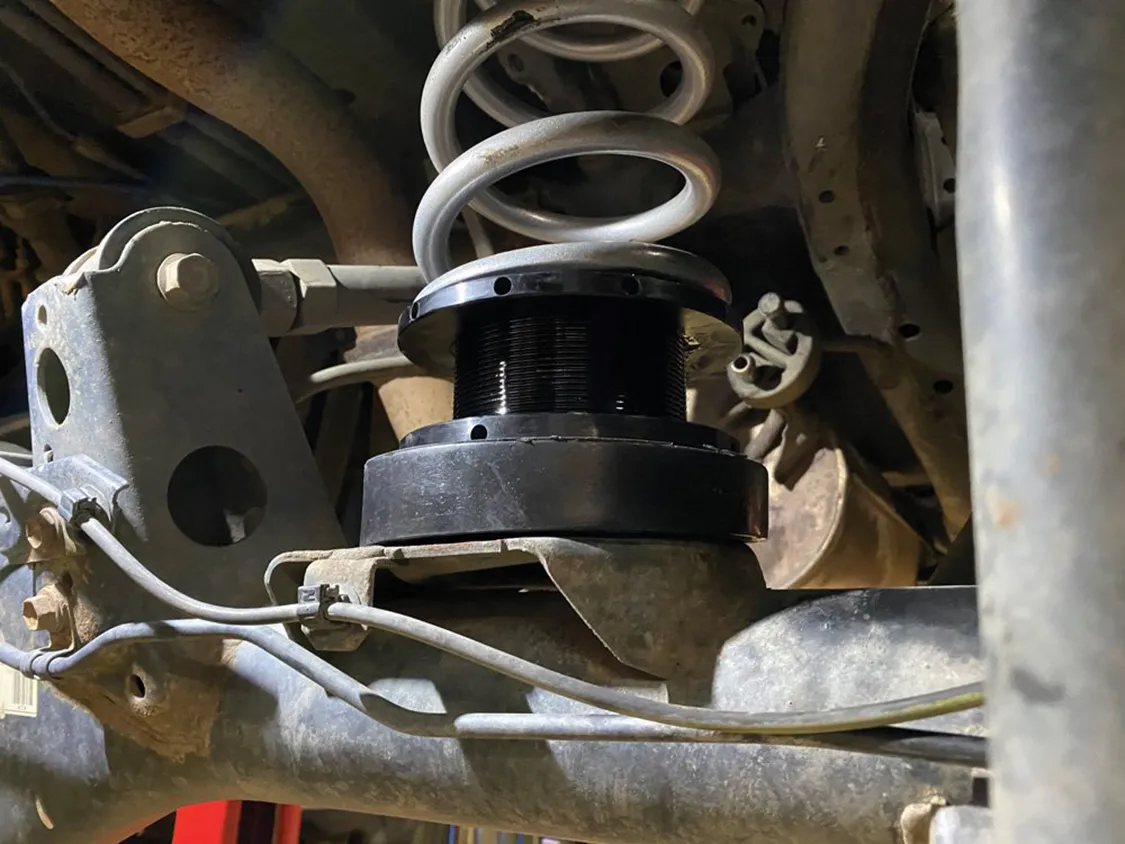
Because of how well this system has performed for us, we’re now considering swapping out the rest of our suspension to Eibach.
The Eibach Load-Leveling System can be used on most 2000-plus Toyotas, including 80- and 100-series Land Cruisers, FJ Cruisers, third- through fifth-generation 4Runners, and Tacomas. When we spoke to Eibach about this particular kit, they told us that they’re working on a promotional program for those who purchased the kit and also want to switch out the rear springs like us. This further hits our point that this kit can grow with you, and Eibach wants to continue to be a part of your evolving build.
You can learn more about Eibach’s Load-Leveling System by visiting eibach.com/us/load-leveling.
Editor’s Note: A version of this article first appeared in the Winter 2020 print issue of YOTA Magazine.

